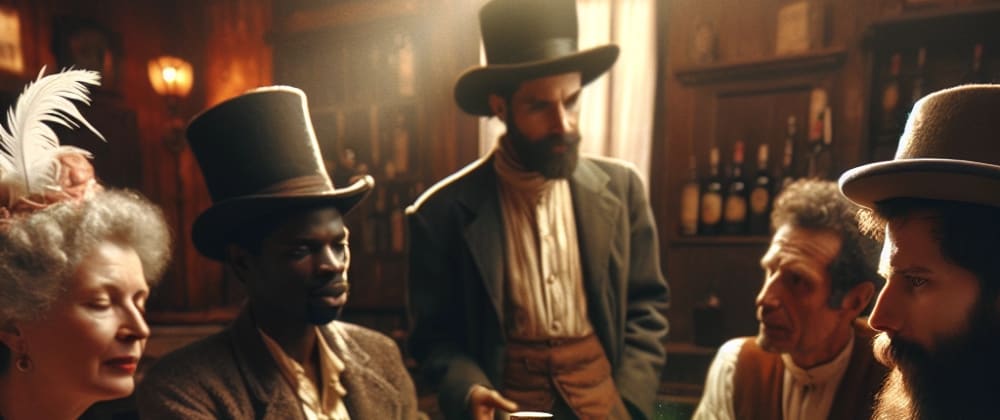🌟 Absinthe: A Storied Elixir Poised for a Modern Revival
Absinthe, often referred to as the "Green Fairy," is a spirit steeped in mystique and history. Known for its distinct flavor and association with artistic bohemian culture, absinthe has experienced both adulation and controversy. This blog post delves into the captivating history of absinthe, its cultural significance, and why it’s time for this legendary elixir to make a triumphant return to the modern world.
📜 The Rich History of Absinthe
Origins
Absinthe's roots can be traced back to ancient times, but it gained prominence in the late 18th century. The modern version of absinthe was developed by Dr. Pierre Ordinaire, a French doctor living in Switzerland, who created it as an all-purpose medicinal elixir. It wasn't long before absinthe became popular in France, particularly among soldiers returning from the Algerian War who had developed a taste for it.
The Golden Age
The late 19th and early 20th centuries marked the golden age of absinthe. It became the drink of choice for many artists, writers, and intellectuals in Paris. Famous absinthe enthusiasts included Vincent van Gogh, Oscar Wilde, Ernest Hemingway, and Edgar Allan Poe. The allure of absinthe was not only its potent effects but also its ritualistic preparation, which involved slowly dripping cold water over a sugar cube placed on a slotted spoon, turning the green spirit a milky white.
Cultural Significance
Absinthe was more than just a drink; it was a symbol of creativity and rebellion. It was celebrated in paintings, literature, and music. Henri de Toulouse-Lautrec and Pablo Picasso featured absinthe in their works, capturing the spirit of the bohemian lifestyle. The drink was believed to inspire visions and enhance creativity, adding to its mystique.
Controversy and Ban
Despite its popularity, absinthe became controversial. It was blamed for a variety of social problems, including mental illness and violent behavior, largely due to misinformation and fear-mongering. The chemical compound thujone, found in wormwood (a key ingredient in absinthe), was falsely believed to be hallucinogenic and dangerously addictive. By the early 20th century, absinthe was banned in many countries, including France, Switzerland, and the United States.
Revival
Absinthe's reputation began to change in the late 20th century as research debunked many of the myths surrounding it. Thujone was found to be present in such small quantities in absinthe that it posed no significant health risk. In 2007, the U.S. lifted its ban on absinthe, and many European countries followed suit, leading to a resurgence in its production and popularity.
🍸 Why Absinthe Should Return
Unique Flavor Profile
Absinthe's complex flavor, derived from botanicals like anise, fennel, and wormwood, offers a unique and sophisticated taste experience. Its distinct profile can add depth to cocktails and inspire new mixological creations.
Cultural and Historical Appreciation
Reviving absinthe allows us to reconnect with a rich cultural heritage. Appreciating absinthe is a nod to the artists and intellectuals who shaped its legacy. By reintroducing absinthe into modern culture, we honor its storied past while embracing its potential for contemporary enjoyment.
The Ritual and Experience
The traditional preparation of absinthe is an experience in itself. The ritualistic nature of serving absinthe – involving the use of specialized glassware, spoons, and fountains – creates a sense of occasion and celebration. This ceremonial aspect can be a draw for those seeking a unique and engaging drinking experience.
Versatility in Mixology
Absinthe is not only consumed traditionally but also used as an ingredient in various cocktails. Classics like the Sazerac, Death in the Afternoon, and Corpse Reviver No. 2 showcase absinthe’s versatility. Modern mixologists can experiment with absinthe to create innovative cocktails that push the boundaries of flavor.
🌠 Conclusion
Absinthe, with its rich history and cultural significance, deserves a place in the modern world. By understanding and appreciating its past, we can bring absinthe back into the spotlight, celebrating its unique qualities and the creative spirit it embodies. As we continue to explore the world of spirits and mixology, absinthe's revival is not just a nod to history but an opportunity for new experiences and innovations.
Raise a glass to the Green Fairy and let’s welcome absinthe back into our lives. Santé! 🍸



















